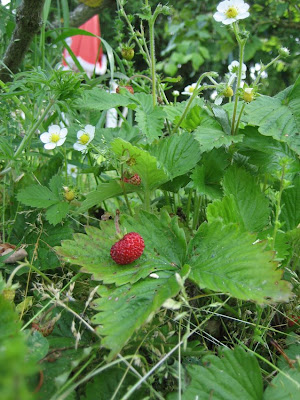
 As summer approaches most people are singling out their beverages of choice; mojito, gin and tonic, lemonade, etc. I have recently discovered mine, it's vinegar (black sweetened rice vinegar, to be exact). On the rocks it's delicious. When I told B he grimaced and asked why on earth would I subject myself (and by proxy him too) to something that's supposed to go in salads.
As summer approaches most people are singling out their beverages of choice; mojito, gin and tonic, lemonade, etc. I have recently discovered mine, it's vinegar (black sweetened rice vinegar, to be exact). On the rocks it's delicious. When I told B he grimaced and asked why on earth would I subject myself (and by proxy him too) to something that's supposed to go in salads.In fact that is exactly the same perception I had of vinegar before I did a vinegar tasting. That's right, you heard me right, a vinegar dégustation at one of my favourite food boutiques called Workshop Issé. Initially I was there just to get a bottle of nashi vinegar but ended up sampling quite a range of vinegars they carry, thanks to the enthusiastic shop assistant. What I learned was that there are a number of vinegars that indeed are for seasoning, but also a large selection for drinking. Apparently Asians, namely Chinese, Korean and Japanese have been drinking vinegar for ages because of the number of health benefits it offers. Drinking vinegar each day is supposed to increase blood circulation, acts as a diuretic, aids digestion, just to name a few.
Though any vinegar can be consumed, some with rather nasty side effects, most vinegars which are consumed as a beverage usually have a low acidic level (around 4% - 6% acetic acid) and is diluted with water. It can then be either sweetened with sugar or honey. A concoction of these ingredients, plus some aromatic spices, was called posca in ancient Roman times, being consumed mostly by soldiers as it masked the bad taste of local water supplies and acted as an antiscorbutic helping to prevent scurvy.
Vinegar has been around for ages in numerous cultures, serving a number of purposes both alimentary and otherwise. To make vinegar you need an alcoholic liquid, oxygen and bacteria of the genus Acetobater or Gluconobacter. For centuries vinegar was produced by allowing alcoholic liquids to go sour, a process that was unpredictable in terms of timing and end results. Then from the 17th century onward a quicker and more controlled process was developed in France where wine was poured through grapevine twigs to speed up the aerating process. In order for acetic acid bacteria to develop it requires oxygen. Today some of the best wines are developed using a method where an alcohol is diluted then stored in either wood casks or in ceramic urns and left to ferment, slowly being exposed to oxygen over time. In some instances this is known as the Orléans Process. For those who want to try their hand at making vinegar at home the best way to start is with combining a wine or fruit base with a cultured yeast and a vinegar "mother" (it's the gelatinous scummy cloud that one finds lurking at the bottom of a bottle of vinegar). I myself have never tried it but some of my friends who have and swear that it works like a charm.
Vinegar is not just for salads! It is beverage, health tonic, science experiment, and even household cleaning product. A wonder we don't exercise all it's charms more often.






